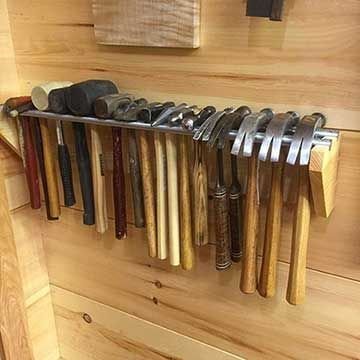Woodworking is a craft that requires precision and meticulous planning to achieve successful and efficient results. One essential aspect of this planning process is blueprinting. Drawing blueprints for woodwork projects provides a visual representation of the final product, allowing woodworkers to accurately execute their vision. In this article, we will explore the significance of blueprinting in woodwork, as well as provide practical guidance on how to create accurate and detailed blueprints.
Blueprinting plays a crucial role in woodwork projects by ensuring that every detail is accounted for before construction begins. It serves as a roadmap, guiding woodworkers through the various stages of the project, from initial design to final assembly. With accurate blueprints in hand, woodworkers can avoid costly mistakes and rework by visualizing potential challenges and finding solutions before starting the actual construction.
Creating precise blueprints requires a set of basic tools and materials. Graph paper, pencils, rulers, and other measuring instruments are essential for accurately drawing dimensions and angles. In addition to these tools, understanding measurements and scales is vital to ensure accuracy in your blueprints. By establishing consistent scaling methods and using correct measurements techniques, you can eliminate errors that may arise during the construction phase.
In the following sections of this article, we will delve deeper into the process of blueprinting woodwork projects. We will cover topics such as initial sketching techniques for creating a rough framework, adding precise measurements and dimensions to your blueprint, exploring advanced technologies like 3D renderings and CAD software, troubleshooting common challenges faced during blueprinting, interpreting your own blueprints effectively, and ultimately emphasizing the power of blueprinting in woodwork.
Whether you are an experienced woodworker or just starting out in this craft, mastering the art of drawing blueprints will undoubtedly enhance your woodworking skills and elevate your projects to new heights of precision and efficiency. So let’s dive into this comprehensive guide on how to draw blueprints in woodwork and unlock the full potential of your woodworking endeavors.
Basic Tools and Materials Needed for Blueprinting Woodwork
When it comes to blueprinting woodwork projects, having the right tools and materials is crucial. Not only does it ensure accuracy in your blueprints, but it also makes the process easier and more efficient. In this section, we will discuss the basic tools and materials needed for blueprinting woodwork.
Firstly, one of the essential tools for blueprinting woodwork is a good quality pencil. Using a pencil allows for easy erasing and making adjustments as you go along. It’s recommended to use a graphite or mechanical pencil with a fine lead point for precise drawing.
Another important tool is a ruler or straightedge. This will help you create straight lines and measure accurately on your graph paper. A transparent ruler or T-square can be beneficial when working with detailed measurements.
Graph paper is also a must-have material for blueprinting woodwork. Choose graph paper that has clear grid lines and spacing that suits your project needs. The graph paper will act as your canvas, allowing you to sketch out the dimensions and structure of your woodwork project accurately.
In addition to these basic tools and materials, it can be helpful to have other supplies such as protractors for measuring angles, compasses for creating circles or arcs, and tracing paper for making copies or rough drafts of your blueprints. These additional tools can aid in achieving precision in your drawings.
By having these basic tools and materials at hand, you’ll be well-equipped to start blueprinting your woodwork projects effectively. With accurate measurements and clear sketches on quality graph paper, you’ll set yourself up for success in bringing your woodworking ideas to life.
Measurements and Scales
Accurate measurements and scales are crucial in woodwork blueprints to ensure precision, proper fit, and successful execution of the project. Without precise measurements, the final piece may not align correctly or function as intended. This section will explain the importance of accurate measurements and scales in woodwork blueprints and discuss different techniques for achieving precision.
When creating a blueprint for a woodwork project, it is essential to take accurate measurements of various components, including lengths, widths, and heights. These measurements should be recorded with appropriate units of measurement, such as inches or centimeters. One common technique for obtaining accurate measurements is using a tape measure or ruler that is easy to read and provides clear markings.
In addition to taking accurate individual measurements, it is important to establish a proper scale in your blueprint design. Scaling ensures that the proportions between different components are accurately represented on paper. This allows you to visualize the final product more accurately before starting the woodworking process.
Common scaling methods include one inch equals one foot (1:12 scale) or one centimeter equals one meter (1:100 scale). It’s crucial to choose a scale that suits the size of your project while maintaining legibility in your blueprint.
To achieve precision in your blueprints, consider using additional tools like squares, calipers, or digital measuring devices when necessary. These tools can help ensure that angles are correct and distances are measured accurately. Remember that even small measurement errors can have significant effects on the final product’s functionality and aesthetic appeal.
By prioritizing accurate measurements and choosing an appropriate scaling method, woodworkers can establish precision in their blueprints. This attention to detail during the drafting phase of a project sets the stage for successful execution and satisfying results in woodwork projects.
- Use high-quality measuring tools with clear markings.
- Take precise individual measurements for each component.
- Choose an appropriate scaling method to maintain accurate proportions in the blueprint design.
Initial Sketching
Creating a rough blueprint framework is an essential step in the process of drawing blueprints for woodwork projects. This initial sketch serves as the foundation upon which more intricate details and precise measurements will be added later. By following proper techniques during this stage, woodworkers can ensure that their final blueprint accurately represents their vision for the project.
To begin with, it is important to gather all the necessary tools and materials for sketching the rough blueprint. These include graph paper, pencils, rulers, and erasers. Graph paper provides a helpful grid system that aids in creating straight lines and maintaining accurate proportions. Pencils should be used instead of pens to allow for easy modifications or corrections as needed.
Once equipped with the required materials, woodworkers can start by outlining the basic shape and dimensions of their project on the graph paper. It is advisable to start with a simple geometric shape that represents the overall structure of the woodwork piece such as a rectangle or square. This helps establish a solid framework from which additional details can be built upon.
When sketching the rough blueprint framework, it is crucial to pay attention to proportions and angles. Utilizing a ruler can assist in ensuring straight lines while an angle measuring tool can help create accurate angles when needed. Checking that all corners are 90 degrees or any other desired angle will contribute to achieving precision in the model representation.
By taking these important steps during initial sketching, individuals can lay a strong groundwork for developing more detailed blueprints later on. Properly visualizing and planning out their woodwork project at this early stage will significantly contribute to successful execution further down the line.
| Tools | Materials |
|---|---|
| Pencils | Graph paper |
| Rulers | Eraser |
Detailing the Blueprint
Once the initial sketch of the woodwork project has been completed, it is essential to add precise measurements, dimensions, and annotations to ensure accurate construction. This step is crucial in creating a comprehensive blueprint that will guide the woodworker throughout the project. In this section, we will discuss the importance of detailing the blueprint and provide guidelines on how to effectively add these necessary elements.
One of the primary purposes of detailing the blueprint is to provide clear instructions and guidance during the construction process. Precise measurements allow for accurate material cutting and joinery, ensuring that every piece fits together seamlessly. Dimensions help determine specific sizes for components such as shelves or drawers, while annotations can indicate hardware locations or notes on specific techniques or finishes.
When adding measurements, it is important to use consistent units of measurement throughout the blueprint. Whether you choose inches, centimeters, or another standard unit, using it consistently will prevent confusion during construction. Use a ruler or measuring tape to measure lengths accurately and be sure to label each dimension clearly.
Annotations are another crucial aspect of detailing a blueprint. They provide additional information that may not be evident from the initial sketch alone. For example, if certain joints require a specific angle or technique, including this information in an annotation can help guide the woodworker during assembly. It is also helpful to note material thicknesses so that proper adjustments can be made when selecting materials.
In addition to dimensions and annotations in your blueprint, it can be beneficial to include symbols or icons for clarity. These visual indicators can represent various elements such as screw locations or assembly steps and make it easier for woodworkers to interpret and follow the blueprint accurately.
By taking the time to detail your blueprint with precise measurements, dimensions, annotations, and symbols if needed, you are setting yourself up for success in your woodwork project. This attention to detail ensures accuracy during construction and helps avoid costly mistakes or misinterpretations down the line.
| Element | Description |
|---|---|
| Measurements | Precise lengths, widths, and heights of components |
| Dimensions | Specific sizes of shelves, drawers, or other parts |
| Annotations | Including notes on joinery techniques, material thicknesses, or hardware locations |
| Symbols/Icons | Visual indicators to represent specific elements or instructions |
Exploring Advanced Techniques
Woodworking blueprints have come a long way from traditional hand-drawn sketches on graph paper. With the advancements in technology, woodworkers now have access to more sophisticated tools and techniques that can enhance the blueprinting process. In this section, we will explore advanced techniques such as 3D renderings and computer-aided design (CAD) software, which can revolutionize the way you create detailed woodwork blueprints.
One of the most exciting developments in modern blueprinting is the ability to create 3D renderings of your woodworking projects. These renderings provide a realistic representation of how your finished piece will look, allowing you to visualize it from different angles and make any necessary adjustments before starting construction. To create a 3D rendering, you can use specialized software like SketchUp or Fusion 360, which offer user-friendly interfaces for designing and modeling woodwork projects.
Computer-aided design (CAD) software is another powerful tool that can greatly enhance your blueprinting process. CAD software allows you to create precise, detailed drawings with accurate measurements and dimensions. It offers features like automatic scaling, layer management, and the ability to easily modify designs without having to start from scratch. With CAD software, you can also generate material lists, calculate costs, and even simulate the assembly process to ensure everything fits together perfectly.
While these advanced techniques may seem intimidating at first, they offer numerous advantages for woodworkers. They save time by streamlining the design process, reduce errors by offering precision tools and measurement systems, and allow for greater flexibility in experimenting with different variations of a design. Additionally, they provide an effective means of communication between woodworkers and clients or collaborators who may not have experience interpreting traditional blueprints.
Troubleshooting Common Blueprinting Challenges
Addressing Inaccurate Measurements
One common challenge that woodworkers may encounter during the blueprinting process is inaccurate measurements. Incorrect measurements can lead to significant errors in the final woodwork project, resulting in ill-fitting components or structural instability. To overcome this challenge, it is crucial to double-check all measurements and ensure their accuracy before proceeding.
One helpful tip is to use multiple measuring tools to cross-verify measurements. For example, if you are measuring a length with a ruler, try using a tape measure as well. If both measurements match, you can have more confidence in their accuracy. Additionally, it is recommended to measure multiple times from different angles or reference points to minimize errors.
If an error does occur despite your best efforts, it’s important not to panic. Instead, identify the discrepancy and make necessary adjustments on the blueprint. This might involve recalculating dimensions or redrawing specific sections of the blueprint. Remember that blueprinting is a dynamic process, and adjustments are sometimes needed along the way.
Solving Proportional and Angle Issues
Another common issue that woodworkers may face when drawing blueprints is maintaining correct proportions and angles. When transferring a vision onto paper, it can be challenging to accurately depict each component’s size and angle relationships without distorting them.
To address proportional issues, start by examining the reference object or design concept carefully. Identify key elements or dimensions that define its proportions and use them as guide points while sketching on graph paper. Taking additional measurements directly from the reference object can also help ensure accurate proportions.
When dealing with angle issues, consider using drafting tools such as protractors or angle finders for precise measurements. These tools assist in achieving the desired angles when drafting the blueprint. It may also be helpful to practice sketching different types of angles beforehand to become more comfortable with accurately representing them on paper.
Remember that achieving perfect proportions and angles on the blueprint doesn’t have to be an exact science. It’s essential to strive for accuracy, but also keep in mind that the final woodwork project can often be adjusted during the construction phase.
Resolving Complex Joinery and Material Thickness Challenges
Woodwork projects often involve complex joinery techniques and various material thicknesses. Translating these details onto the blueprint accurately can present challenges for woodworkers. However, there are strategies you can employ to overcome these obstacles.
When dealing with complicated joinery, consider breaking it down into simpler steps or sub-assemblies. Focus on capturing each step clearly on the blueprint before moving on to the next one. This will help ensure that all necessary joinery is accounted for and appropriately detailed in the final blueprint.
Addressing material thickness challenges requires paying close attention to small details. Remember to measure and document every component’s thickness accurately and note it on the blueprint. Additionally, depict different materials with distinctive linework or shading to differentiate their thickness visually.
If you encounter difficulties representing complex joinery or material thicknesses accurately on paper, consider utilizing advanced techniques such as 3D renderings or CAD software as discussed in a later section of this article. These tools can provide a clearer visualization of how different components fit together, making it easier to represent them in the blueprint accurately.
Practicing Blueprint Interpretation
Understanding the Blueprint
Once you have successfully created your blueprint for a woodwork project, the next step is to understand and interpret it accurately. This is crucial in ensuring that your vision translates smoothly into the actual creation. To begin with, take some time to study the blueprint thoroughly. Familiarize yourself with the different symbols, measurements, and annotations used. Pay close attention to any notes or labels that indicate specific joinery techniques, material thickness, or hardware locations.
Breaking Down Measurements
One of the most important aspects of interpreting a blueprint is understanding and utilizing the measurements provided. This involves comprehending the scale at which the blueprint has been drawn. For example, if one inch on your blueprint represents one foot in real life, it is essential to convert measurements accordingly. Take precise measurements from your actual woodwork piece and use them as reference points while working on your project.
Another factor to consider is understanding fractional measurements commonly used in blueprints. If your blueprint indicates a measurement like 1/2 inch or 3/4 inch, it is crucial to know how to translate those fractions accurately onto your workpiece. Utilize measuring tools such as calipers or rulers with fraction markings for precision.
Translating from Blueprint to Woodwork
To effectively translate your blueprint into a woodwork creation, it can be helpful to break down the process into smaller steps. Start by identifying key components and sections of your project based on the labels and symbols provided on the blueprint. Begin with simple shapes and gradually add more complex details.
Take note of any specific angles indicated on the blueprint and use tools such as protractors or angle finders to ensure accuracy during construction. Continuously refer back to your blueprint as you progress through each stage of building. Regularly compare measurements between your workpiece and the dimensions specified on the blueprint to maintain precision.
By practicing blueprint interpretation and honing your skills in translating blueprints into woodwork creations, you will become more proficient in executing your projects accurately and efficiently. Remember to be patient and always double-check measurements and details to ensure a successful outcome.
Conclusion
In conclusion, blueprinting plays a vital role in the world of woodwork. By highlighting the significance of drawing precise blueprints, this article has emphasized the importance of accurate planning and execution in woodwork projects. The use of proper tools and materials, along with understanding measurements and scales, ensures that the final product turns out as intended.
Throughout this article, readers have learned how to create blueprints starting from sketching a rough framework to adding detailed measurements and annotations. They have been introduced to advanced techniques such as 3D renderings and CAD software that can enhance their blueprinting skills. Additionally, common challenges faced during blueprinting have been addressed with practical solutions.
This concluding section aims to emphasize the power of blueprinting for woodworkers. Having proper blueprints allows for better project planning and execution, ensuring efficiency and accuracy in every phase of the woodwork process. With blueprints in hand, woodworkers are able to translate their ideas into tangible creations while avoiding mistakes or unnecessary rework.
In summary, blueprinting not only provides a roadmap for building a woodwork project but also serves as a tool for creative expression and problem-solving. By encouraging readers to utilize blueprinting techniques, this article hopes to empower woodworkers with the ability to bring their vision to life through meticulous planning and execution. Keep these blueprinting principles in mind, and let your creativity soar in woodworking endeavors.
Frequently Asked Questions
How do you plan a woodwork project?
Planning a woodwork project involves several important steps. Firstly, it is essential to clearly define the objective and purpose of the project, whether it’s building a piece of furniture, a structure, or any other woodworking creation. Next, gather inspiration and ideas for the design by researching different styles, materials, and techniques. Once a design concept is decided upon, create detailed sketches or digital models that illustrate the dimensions, joinery methods, and overall aesthetics of the project.
It is also crucial to consider the necessary tools and materials needed for construction. Additionally, make sure to carefully calculate measurements and dimensions to ensure accurate and precise results. Finally, create a timeline with specific milestones to track progress throughout the woodworking project.
What two types of drawings are commonly used in woodworking?
Two types of drawings commonly used in woodworking are floor plans and detailed construction drawings (elevation or section views). Floor plans provide an overhead view of the woodworking project, showcasing its layout and dimensions within a defined space. This type of drawing helps determine how all the elements fit together spatially.
Detailed construction drawings provide close-up views of specific areas or components of the project. They typically include precise measurements and annotations to guide the woodworker during construction. Both types of drawings are essential tools that help visualize the project’s design, understand its construction requirements, and ensure accuracy during execution.
Is Fusion 360 good for woodworking?
Fusion 360 can be a valuable tool for woodworking enthusiasts or professionals looking to incorporate digital design into their workflow. Fusion 360 offers a wide range of features that are beneficial for planning and visualizing woodworking projects. It allows users to create three-dimensional models that accurately represent their designs before starting physical construction. The software enables virtual prototyping by simulating joints, fasteners, textures, finishes, and even realistic lighting conditions for accurate rendering visualization purposes.
Fusion 360 also provides options for generating precise measurements within its modeling environment, making it easier to plan joinery details accurately. However, despite these advantages, some traditional woodworkers may prefer more hands-on methods and find physical sketches or models more conducive to their creative process. Ultimately, the usefulness of Fusion 360 in woodworking depends on individual preferences and the specific requirements of each project.

Hi everyone! I’m a woodworker and blogger, and this is my woodworking blog. In my blog, I share tips and tricks for woodworkers of all skill levels, as well as project ideas that you can try yourself.





